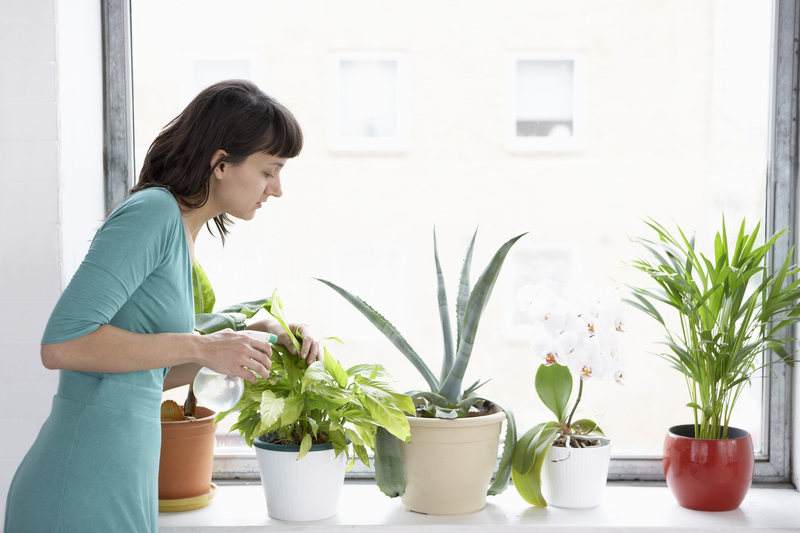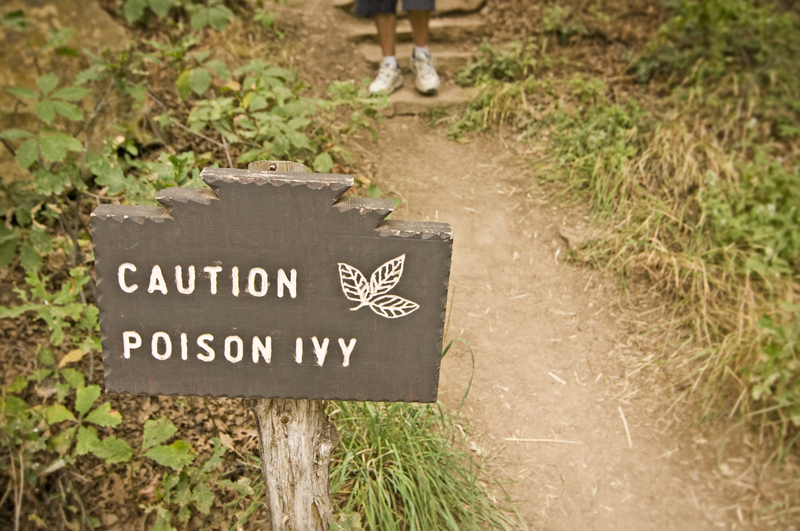Design Strategies for a Stunning Garden Seating Space
Posted on 22/06/2025
Design Strategies for a Stunning Garden Seating Space
Transforming your outdoor area into a serene retreat requires both creativity and strategic planning. In this comprehensive guide, we explore a variety of design strategies for a stunning garden seating space that will elevate any garden--whether you're working with a sprawling backyard or a cozy urban courtyard. Discover expert tips, innovative ideas, and timeless principles to create an inviting oasis for relaxation, entertainment, and personal inspiration.

Understanding the Essentials of Garden Seating Spaces
Before diving into specific design strategies, it's important to grasp what garden seating spaces truly represent. Beyond mere function, these areas offer opportunities for interaction, contemplation, and enjoyment of the outdoors. Your garden bench, lounge, or dining area can be a visual centerpiece, a private nook, or a social hub, depending on your needs and aesthetic preferences.
- Functionality: Will the space be for hosting gatherings, quiet meditation, or casual family time?
- Style: Is your garden modern, rustic, minimalist, or cottage-inspired?
- Size and Scale: Consider the dimensions for a harmonious fit within your landscape.
- Comfort: Ergonomic seating and climate considerations are crucial for year-round use.
Planning Your Garden Seating Area
1. Site Assessment and Location
Analyzing your garden's layout is the first step. Seating placements should consider sunlight, views, privacy, and proximity to nature. Think beyond the obvious patio or deck--nestle a bench under a shady tree, or position lounge chairs to face a flower bed or water feature.
- Morning coffee nooks facing the sunrise.
- Secluded benches enveloped by hedges or tall grasses.
- Lively dining zones near the kitchen or grill area.
2. Choosing the Right Furniture
Quality outdoor furniture is essential for a beautiful and functional garden seating area. Consider materials that withstand the elements and match your aesthetic.
- Wood: Classic and warm (teak, eucalyptus, cedar).
- Metal: Sleek, modern, and durable (aluminum, wrought iron).
- Rattan/Wicker: Light and casual for relaxed settings.
- Concrete: Bold, architectural, and low-maintenance.
Balance form and function with plush cushions, weather-resistant fabrics, and flexible arrangements--mix lounge chairs with ottomans or modular sofas for ultimate adaptability.
3. Incorporating Shade and Shelter
One of the key secrets to a comfortable garden seating space is thoughtful shelter from harsh sun and elements. Explore numerous options:
- Arbors or pergolas draped with flowering vines.
- Large umbrellas or shade sails for flexible coverage.
- Trees for natural dappled light.
- Gazebos or summerhouses for all-weather use.
Include features that add ambiance--like outdoor curtains for privacy or retractable canopies to adapt to shifting weather.
Enhancing Aesthetics and Atmosphere
4. Integrating Plantings for Harmony
Gardens are living, evolving environments, and your seating areas should reflect this dynamism. Frame your space with thoughtful plant selections:
- Fragrant herbs or flowers (lavender, jasmine, rosemary) enrich the sensory experience.
- Low hedges or tall grasses add a sense of enclosure and privacy.
- Vertical gardens or potted plants soften hard lines and enhance intimacy.
- Seasonal plantings--for continual interest throughout the year.
_Clusters of plants can guide movement, highlight focal points, and connect your seating space with the broader landscape._
5. Pathways and Flooring Choices
The surface beneath your seating space is as important as the furniture. A blend of practicality and beauty will ensure use in all seasons and add visual appeal.
- Naturally textured stone or pavers for classic charm.
- Timber decking for warmth and comfort underfoot.
- Pea gravel or mulch for informal, cottage-style gardens.
- Patterned tiles or outdoor rugs to inject color and personality.
Define seating areas with a change in material, subtle elevation, or geometric patterns to create distinct yet integrated garden "rooms."
6. Lighting for Mood and Safety
Effective garden seating design strategies consider the night as much as day. Smart lighting choices foster atmosphere, highlight features, and ensure safety.
- String lights for twinkling, magical ambiance.
- Lanterns or candlelights for a romantic glow.
- Recessed LED path lights for safe navigation.
- Spotlights to accentuate art, plants, or water features.
Mix functional and decorative elements, and opt for solar-powered lights to minimize your environmental footprint.
Personalizing Your Outdoor Seating Area
7. Creating Zones for Different Activities
Multi-purpose gardens thrive on versatility. Design distinct zones tailored to specific functions, from tranquil reading corners to lively group lounges.
- Intimate alcoves for relaxation, meditation, or one-on-one chats.
- Family tables for alfresco dining, games, or homework.
- Fire pits or chimineas as gathering points for conversation and warmth.
- Children's corners outfitted with playful seating.
Use screening, raised beds, or subtle changes in paving to delineate each zone while maintaining visual harmony throughout your garden.
8. Adding Personality with Decor and Accessories
Give your outdoor seating space an inviting and cohesive look with curated accessories:
- Bright, weather-resistant cushions and throws for seasonal style changes.
- Statement planters, sculptures, or fountains as focal points.
- Outdoor rugs to unify seating clusters and add comfort.
- Side tables, tray carts, or storage benches for convenience.
Personal touches--like artwork, wind chimes, or bespoke signage--turn a simple seat into a unique retreat.
9. Balancing Openness and Privacy
Striking the right balance between openness and seclusion is key when designing a garden seating area. Maximize enjoyment with creative privacy solutions:
- Tall plants or espaliered trees as living screens.
- Freestanding trellis panels with climbing vines.
- Decorative fences, bamboo, or woven willow panels.
- Retractable screens or outdoor curtains for flexible shelter.
_Think about lines of sight from neighboring properties, roads, or upper floors--and adjust your strategy accordingly._
Innovative Features for Contemporary Garden Seating Spaces
10. Incorporating Water and Fire Elements
Water features--such as small fountains, ponds, or bubbling urns--add soothing sounds and movement, making any garden seating space design more tranquil. In contrast, fire pits, fire tables, or chimineas provide warmth, a focal point, and a year-round gathering place. Combine both for a mesmerizing sensory environment.
11. Flexible and Modular Seating Arrangements
Adaptability is crucial for today's gardens. Opt for modular sofas, stacking chairs, or lightweight benches that can be rearranged to suit your needs, whether it's a solo coffee break or a big garden party. This approach also allows you to refresh the layout as seasons--and inspirations--change.
12. Sustainable and Eco-Friendly Choices
Modern outdoor seating design should reflect a respect for nature. Choose FSC-certified woods, recycled materials, or locally sourced stones for your furniture and paving. Incorporate permeable surfaces or rain gardens to manage runoff, and integrate native plants that support pollinators and wildlife.

Troubleshooting Common Garden Seating Design Issues
13. Maximizing Small or Awkward Spaces
Not every garden boasts acres of rolling lawns. Even petite balconies, side yards, or oddly shaped corners can become enchanting seating spots:
- Built-in benches or seat walls maximize floor space.
- Folding or nesting furniture for compact storage.
- Vertical gardens, mirrors, or bright colors to create an illusion of space.
- Integrated planters for combined greenery and seating.
14. Weatherproofing for All-Season Enjoyment
A truly successful garden seating area welcomes use rain or shine. Invest in:
- High-quality, UV- and water-resistant fabrics and covers.
- Drainage solutions to prevent pooling on hard surfaces.
- Heaters, blankets, or windbreaks to extend usability into colder months.
_Proper maintenance--oiling wood, treating metal, washing cushions--will keep your outdoor space stunning year after year._
Conclusion: Turn Your Outdoor Area into a Show-Stopping Retreat
With thoughtful, creative design strategies for a stunning garden seating space, any outdoor area can be transformed into a haven that reflects your personality, enhances your home, and connects you with nature. Whether you're revamping an existing patio or designing from scratch, prioritize comfort, beauty, and functionality. Blend inspirational touches with practical solutions--and enjoy your personal sanctuary for years to come.
Key Takeaways for Garden Seating Excellence:
- Plan around function, aesthetics, and natural features for a balanced layout.
- Layer plantings, textures, and lighting to create a welcoming atmosphere.
- Utilize flexible furniture and modular arrangements for adaptability.
- Personalize with accessories and creative privacy solutions.
- Opt for sustainable and weather-resistant materials for longevity.
Ready to design your own garden seating masterpiece? Start by envisioning how you want to use your space, experiment with different arrangements, and let nature inspire a truly stunning outdoor living area.

